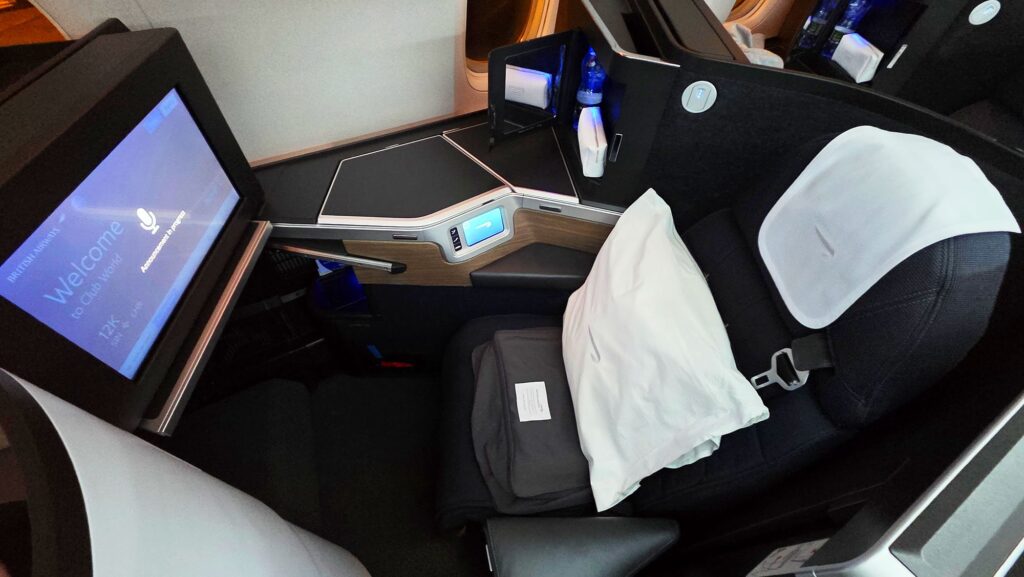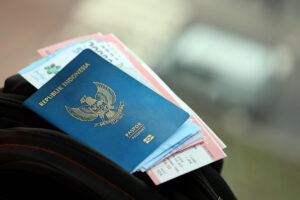
Flying British Airways has traditionally been a mixed experience. As the UK’s flag carrier, it boasts a rich heritage and one of the most recognizable liveries in the sky. However, its business class offering has often lagged behind competitors. This changed with the introduction of the British Airways 777-300ER Club Suite, a significant upgrade that brings the airline into the modern era of business class travel.
British Airways’ new Club Suite marks a monumental leap from the outdated Club World cabin, offering a one-to-one seating configuration with direct aisle access, a refined wine selection, sliding doors for privacy, and large HD entertainment screens with stable Wi-Fi. Despite these improvements, the suite falls short in some areas, such as privacy compared to Qatar’s Qsuite and the simplicity of its amenity kit. Nonetheless, the Club Suite represents a much-needed update for BA’s business class.
The Journey to Modernization
The transition from the old Club World to the new Club Suite is a story of redemption for British Airways. On a recent journey from Singapore to London Heathrow aboard the 777-300ER, the difference was palpable. The new layout transformed the cabin’s atmosphere, offering a sense of order and spaciousness absent in the previous design.
At Singapore Changi Airport, the experience began with a fortunate switch from BA16 to BA12, allowing a taste of the new Club Suite. This change underscored the importance of being aware of aircraft types when booking long-haul flights with BA. The highlight of the pre-flight experience was the Qantas First Lounge, known for its premium design and restaurant-quality dining, which outshines British Airways’ own lounges at Heathrow.
Onboard Experience: Comfort and Technology
Stepping onto the 777-300ER, the immediate impression was one of modernity and comfort. The Club Suite’s design eliminates the awkwardness of the old reverse-angle seats, offering a fully flat bed with direct aisle access and a sliding door for enhanced privacy. Storage solutions are thoughtfully integrated, and the cabin’s aesthetic leans into BA’s signature deep blues with subtle red accents.
The Club Suite is built on a Collins Aerospace platform, shared with Etihad Airways, highlighting a trend in the industry where airlines adopt proven seat platforms and customize them with unique branding. While this approach ensures reliability and comfort, it lacks the bespoke innovations seen in products like Qatar Airways’ Qsuite.
Entertainment and Amenities
The entertainment system in the Club Suite is a marked improvement, featuring crisp HD screens and a solid content library. The Wi-Fi service is reliable for basic browsing and email. However, the amenity kits remain basic, lacking the premium touch found in competitors’ offerings. Bedding, on the other hand, is comfortable, with a full-size pillow and lightweight duvet, though not as luxurious as Qatar’s White Company bedding.
Dining and Service: Room for Improvement
Despite being short-staffed, the crew on this flight delivered a personable and efficient service. The dining experience, however, remains an area where British Airways trails its rivals. While the wine selection was commendable, the food offerings were serviceable but unremarkable, lacking the culinary experience provided by airlines like Singapore Airlines or ANA.
“The key is flying the right aircraft. BA still operates many long-haul routes with the outdated yin–yang Club World. Paying $10,000 to $12,000 for a return trip from Australia to London and ending up with that old cabin is no longer acceptable.”
Conclusion: A Step Forward
The British Airways Club Suite is a significant improvement, offering a competitive and comfortable business class experience. It is not among the top five globally, but it is far from the bottom. The key to a satisfactory experience lies in ensuring travel on the right aircraft, as BA continues to operate older cabins on some routes.
In 2025, the Club Suite provides a dependable option for business travelers, aligning with British Airways’ legacy of innovation. While not perfect, it represents a crucial step forward in the airline’s journey to reclaim its status as a leader in premium travel.







